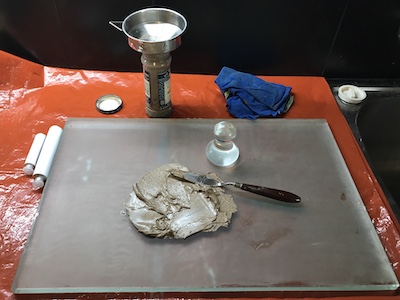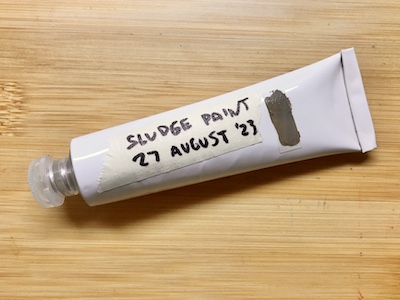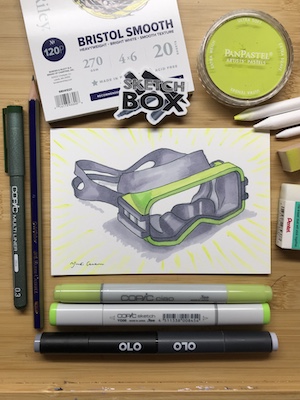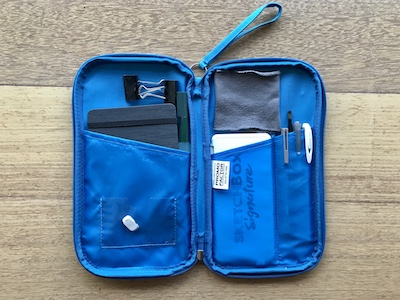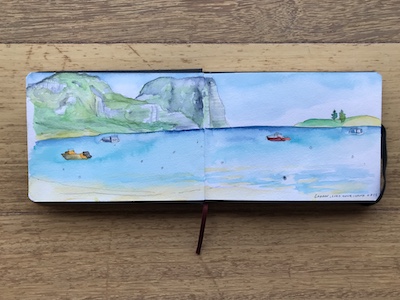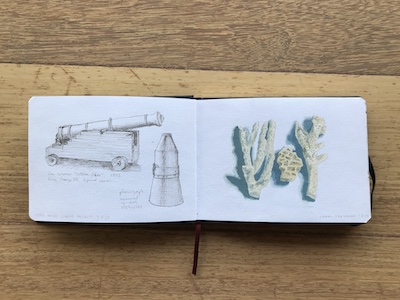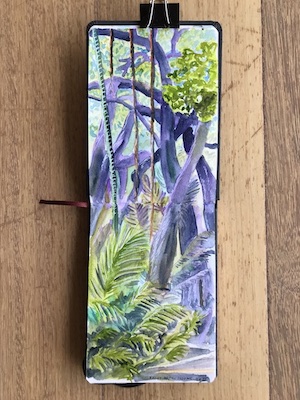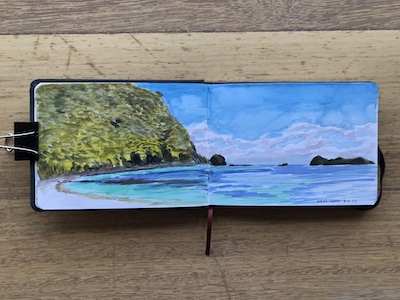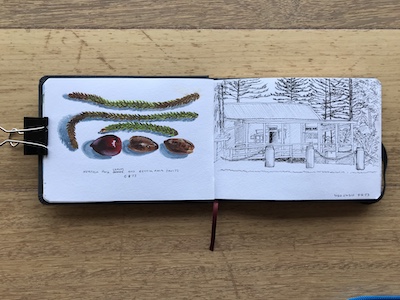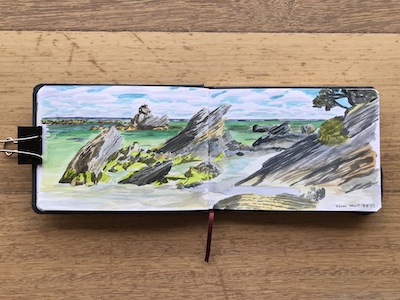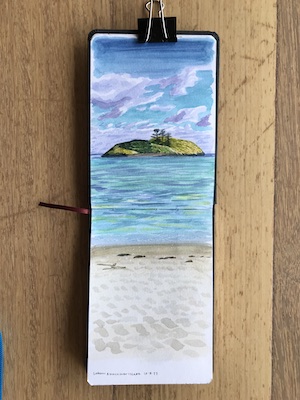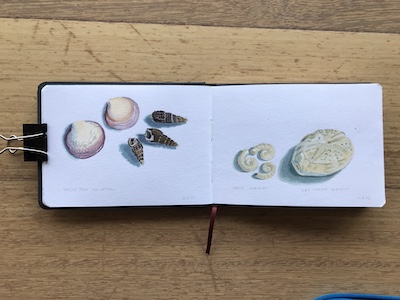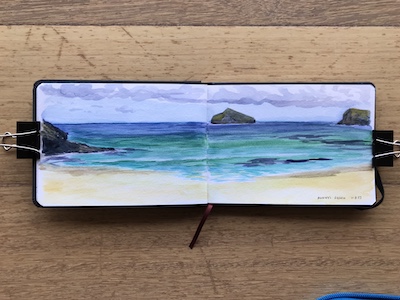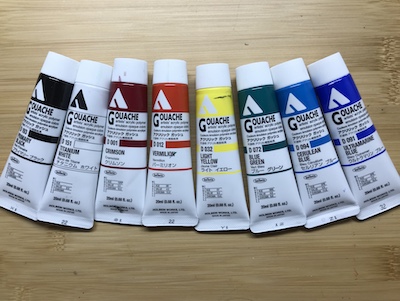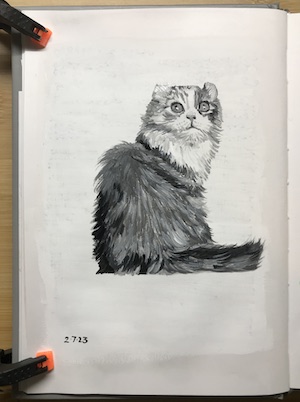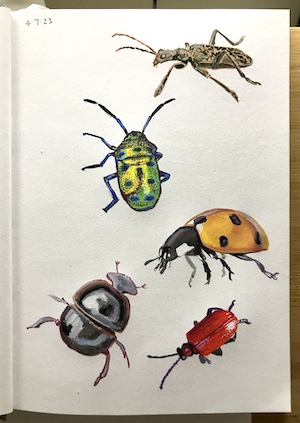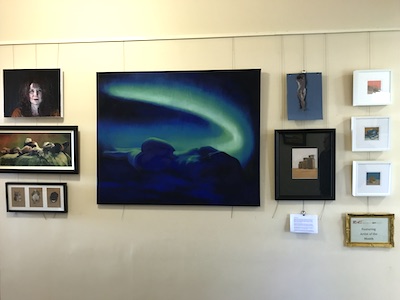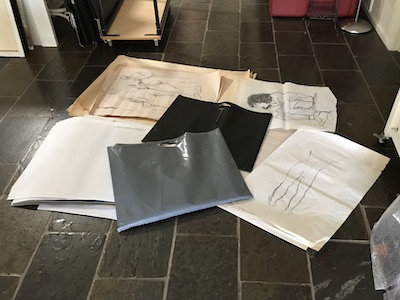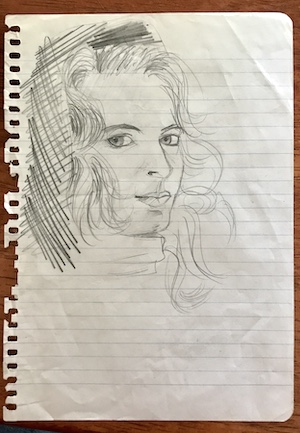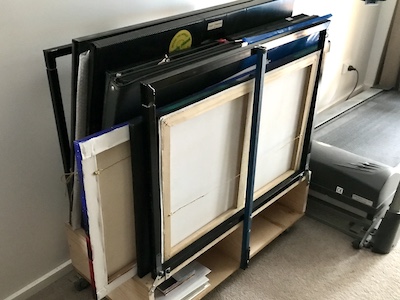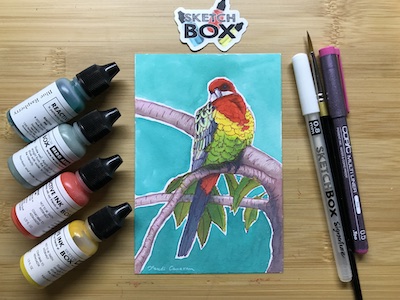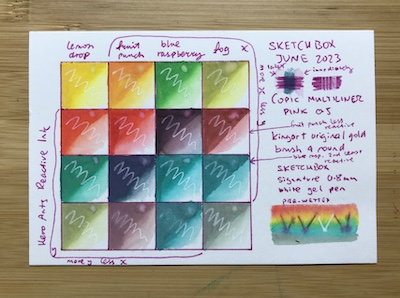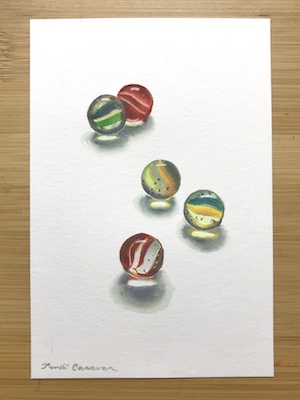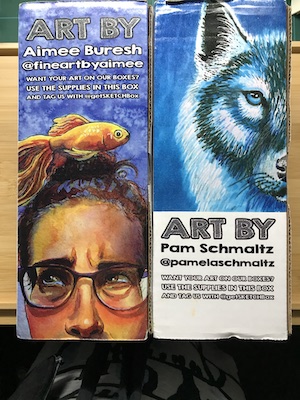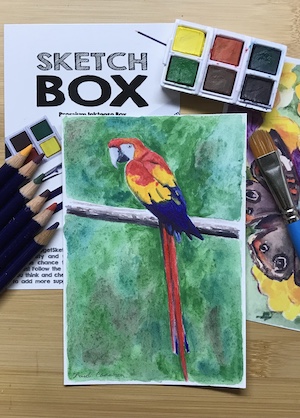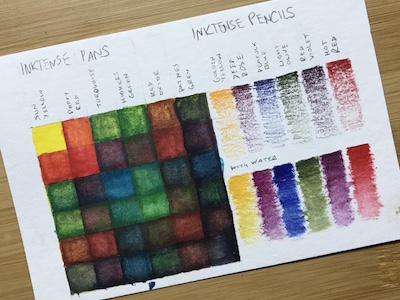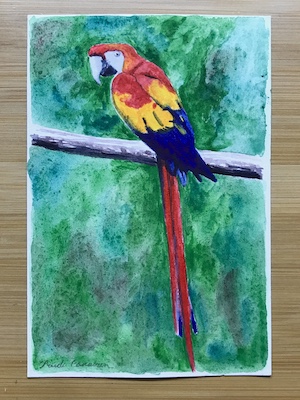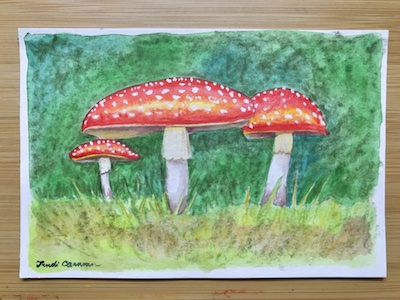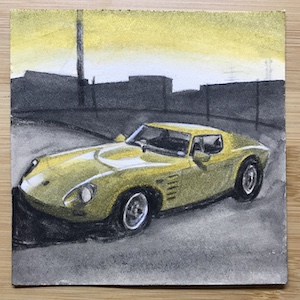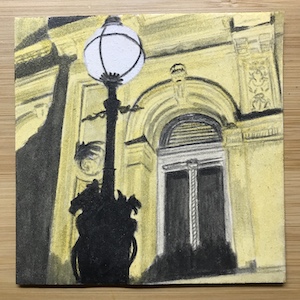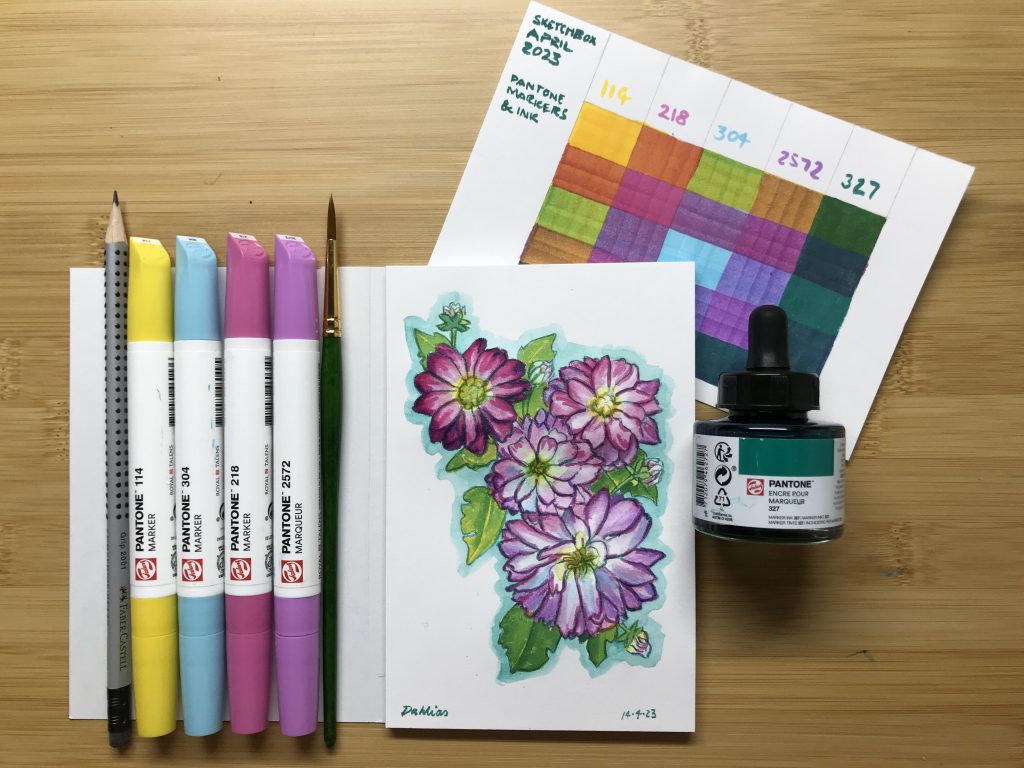Until a few years ago I’d hardly ever been to an artist demonstration. I saw a couple at the last art society and have been going to most of the new society’s events. I’m finding it a strange but interesting experience.
In one I felt a surprisingly strong repulsion to the artist’s method, not because it was bad or the result wasn’t appealing, just because the method was the complete opposite of mine. In another the technique was fascinating but the materials and tools were just so plasticky. The most recent one inspired me to try the method and medium in my ideas sketchbook. The artist used acrylic ink then drew over it with Micron fine liner. I like the result:
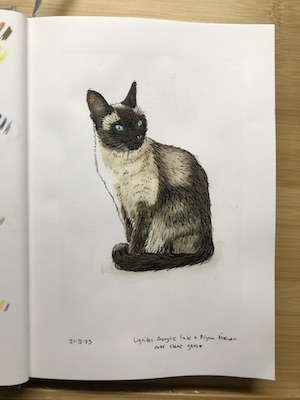
I found I learned something in every demonstration, even the ones I didn’t like. Even when the medium was one I don’t use.
The most recent meeting was a Sponsor’s Night, where the companies that provide prizes and discounts to members came along and demonstrated products. They gave away sets of Black Widow pencils. I’ve been doing a lot of pencil drawing in my ideas sketchbook lately, and was thinking of getting a set of non-water-soluble pencils, so this was great timing. I gave them a go.
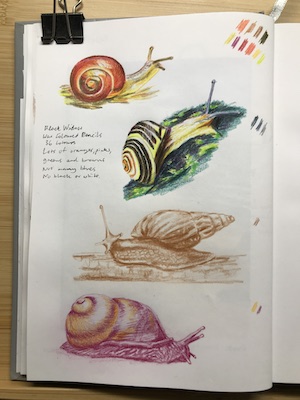
They are lovely to work with. Very creamy. My only complaint is that there are very few blues and no black or very dark colour, which is why the lower two snails are done as monochrome and two-colour. When I looked online it didn’t seem to be possible to buy the pencils individually, but when I dropped into the Art Shop they had a small range. However, not many blues again and no black. Other sets seems to have more blues. The set I got is called “Dragon” which has more greens and red-oranges. This sort of curated collections of colour with themes always seem a bit silly to me. When I buy a set of art materials, I don’t intend to only ever make art in one colourway. But then, maybe other artists do.

